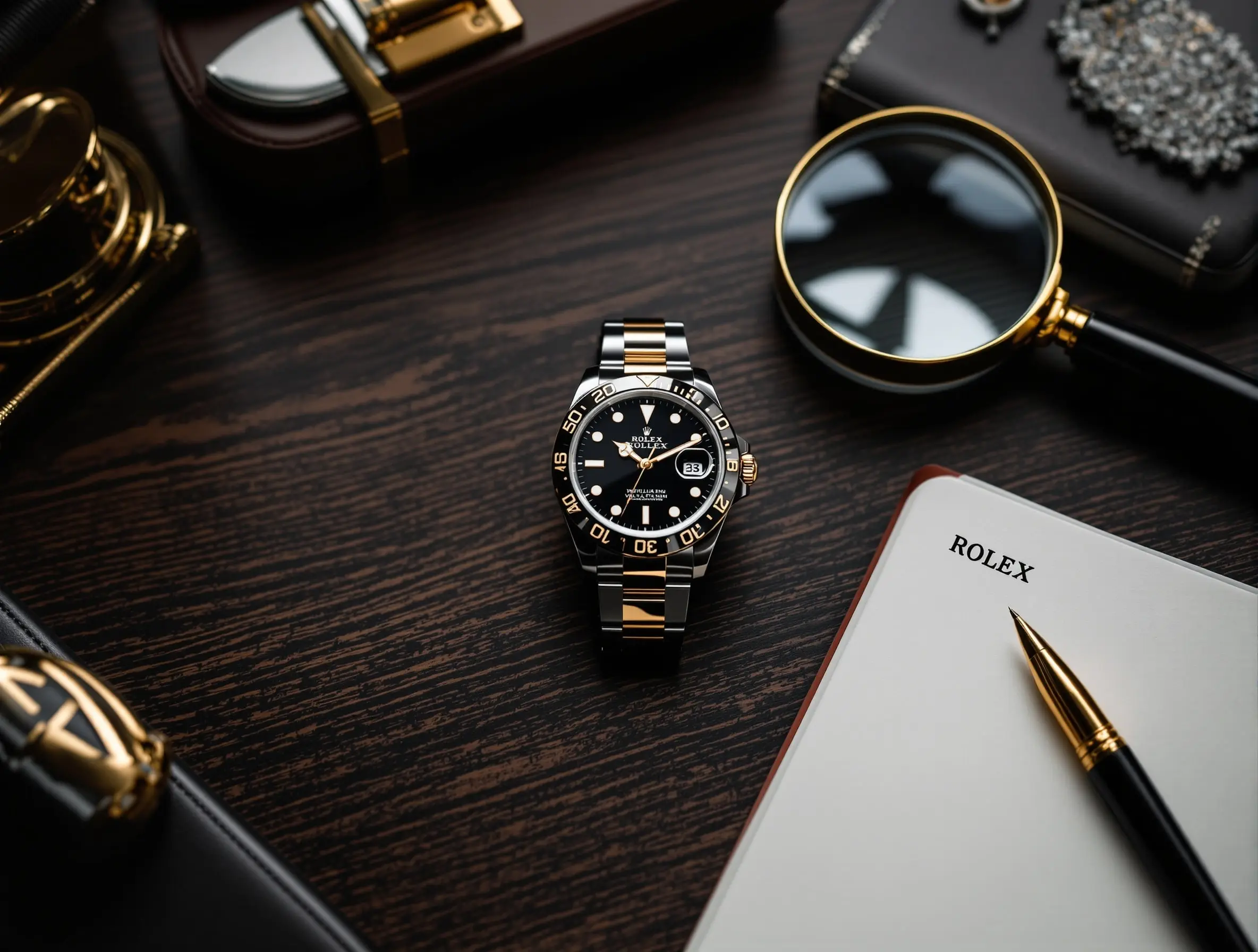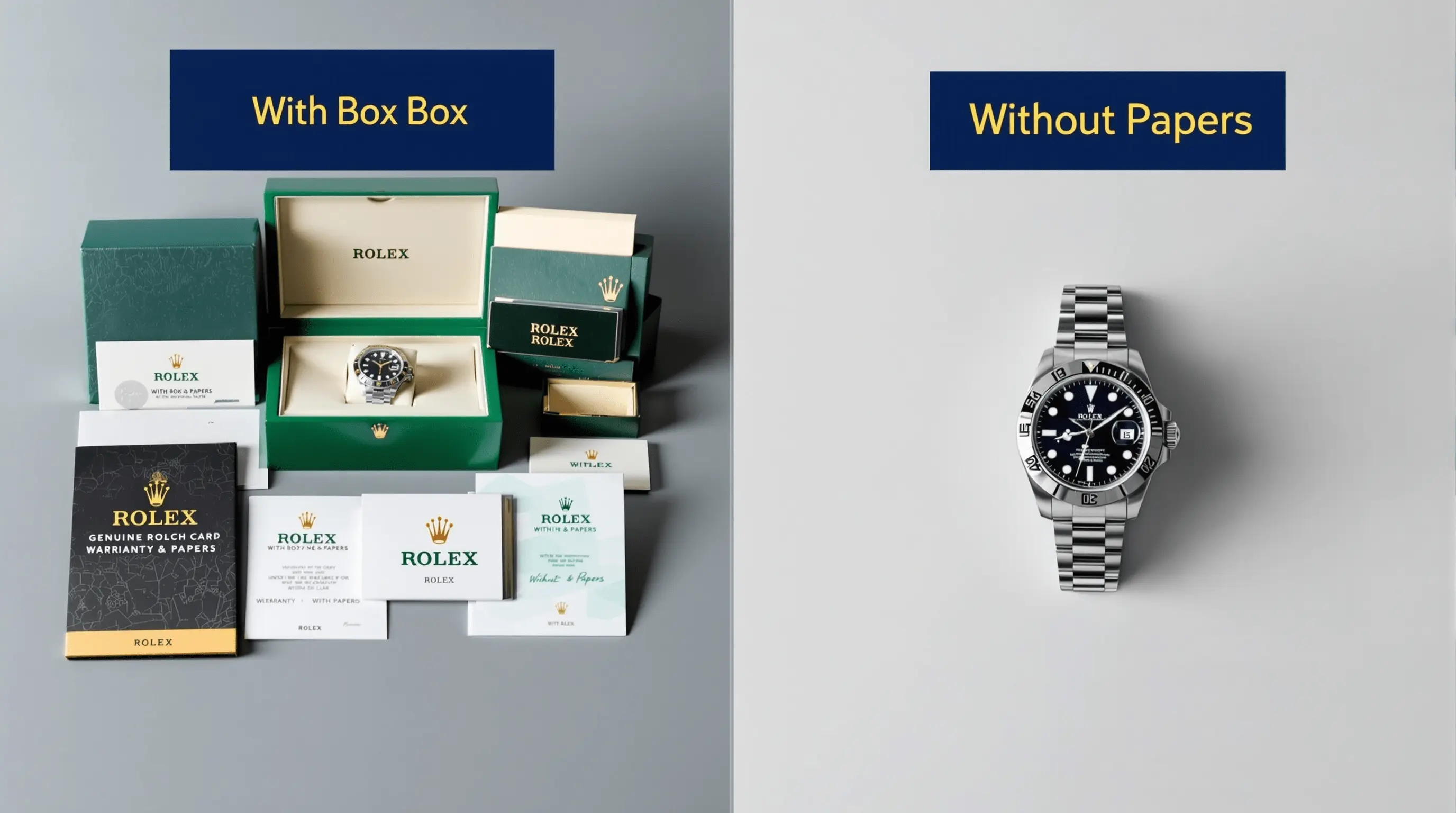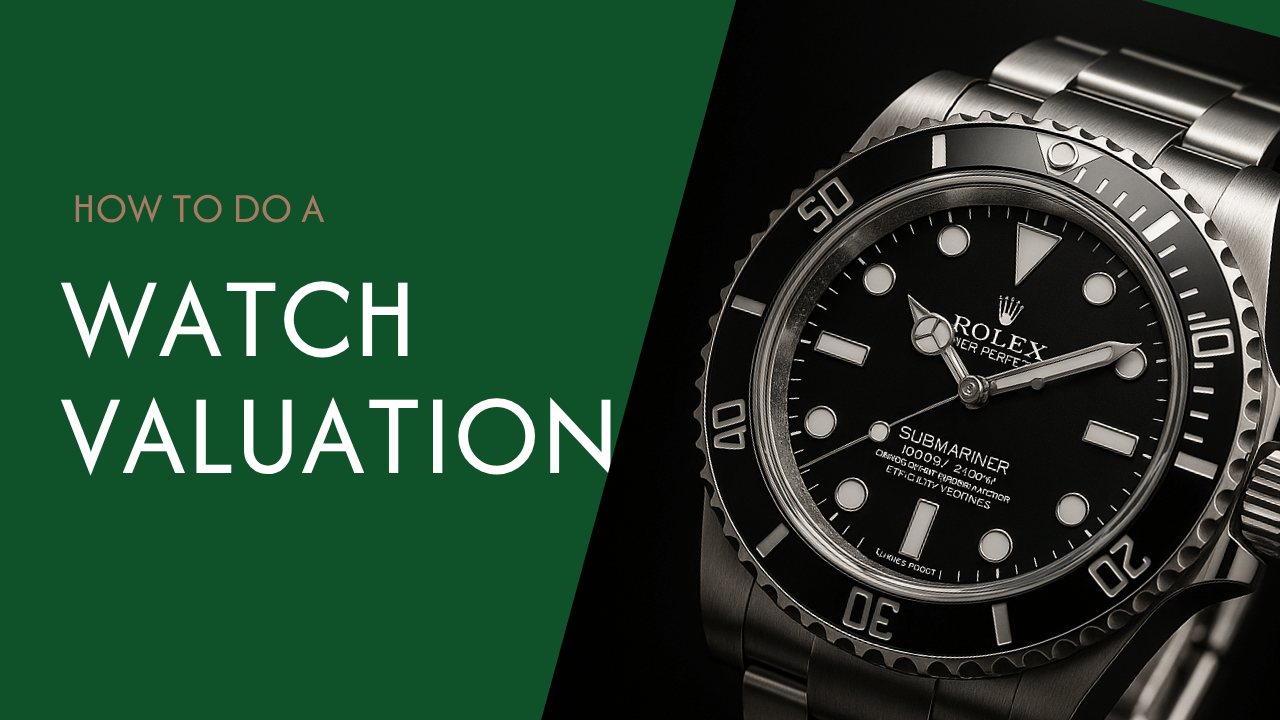Understanding the true value of a luxury timepiece involves more than a simple online search. A professional watch valuation is a meticulous process that considers a multitude of factors, from the undeniable influence of the brand to the critical details of its condition and original paperwork. This guide will walk you through 11 proven methods experts use, explaining what a watch valuation is, detailing methods such as checking the brand and assessing materials, and clarifying why the valuation is necessary.
Finally, we'll guide you on how to get a professional valuation and what to consider when you're ready to buy a pre-owned Rolex from a trusted seller. Whether you need an accurate valuation for legal purposes or to determine the selling price, this guide is for you.

What is a Watch Valuation?
A watch valuation is a definitive assessment of a timepiece's current market worth, conducted by an experienced professional. This assessment is crucial for determining the true value of your timepiece for various purposes. If you are in the UK and looking to sell your watch or simply value your watch, an accurate watch valuation from a skilled valuer is essential. It provides the current market value you need to ensure your asset is correctly valued or to get the best price when you sell. This process is the first step to understanding the value of your watch.
How to Do a Watch Valuation?
While a definitive value should come from an expert, you can perform a preliminary assessment by systematically evaluating your watch against criteria such as branding, identifying the model, valuing materials, and understanding purpose. This process will provide you with a strong foundation for understanding its potential value and help you gain insight into what an expert would say.
The 11 methods of watch valuation are listed below.
1. Checking the Brand
2. Identifying the Model and Rarity
3. Valuing Materials and Craftsmanship
4. Assessing the Condition of the Watch
5. Verifying Original Box and Papers
6. Reviewing the Service History
7. Considering the Age and Provenance
8. Evaluating Complications and Features
9. Researching Current Market Demand
10. Getting a Professional Appraisal
11. Understanding the Final Valuation Purpose
1. Checking the Brand
The brand is the most significant factor in determining a watch's value. Prestigious marques like Rolex, Patek Philippe, and Omega hold their value exceptionally well due to their heritage, reputation for quality, and high market demand. The brand prestige of a luxury watch sets a baseline value that is then refined by other factors, starting with the specific watch models and their materials and craftsmanship. You can trust that a watch from a top-tier brand will always be a competitive asset.

2. Identifying the Model and Rarity
Within a top brand, certain watch models are more sought-after than others. Knowing the specific model number is critical for an accurate valuation. A Rolex Submariner or an Omega Speedmaster will command a higher price than a less popular model. Limited editions, discontinued references, or vintage watches with historical significance are especially valuable due to their rarity. The model's desirability is a primary driver of its market value.
3. Valuing Materials and Craftsmanship
The materials and craftsmanship used in the watch's construction directly impact its value. A timepiece crafted from solid 18k gold, platinum, or titanium will be valued higher than one made from stainless steel. Furthermore, exceptional craftsmanship, such as a hand-finished movement, an enamel dial, or an intricate gem setting, adds significant value to the piece. These are key factors that affect luxury watch prices. The quality of these materials is a key component of the overall assessment and can increase the value of luxury timepieces.
4. Assessing the Condition of the Watch
The condition of the watch is paramount. Collectors and any potential buyer will pay a premium for a watch in "like-new" or excellent condition. Inspect the case and bracelet for scratches and dents, and assess the clarity of the crystal and dial. Most importantly, originality is critical; a watch with replaced parts or aftermarket modifications is worth significantly less. An expert will thoroughly examine your watch for these issues.

5. Verifying Original Box and Papers
The presence of the original box and papers can significantly increase a watch's value. These "extras" include the original box, warranty card, user manuals, and purchase receipt. This documentation serves to authenticate and establish a chain of ownership history. Having every paper and accessory, such as the original tag, gives the buyer confidence, making the watch a more secure investment, and is a crucial step if you want to accurately value your luxury watch. Before purchasing, it’s equally important to learn how to spot a fake Rolex watch to ensure your investment is truly authentic.

6. Reviewing the Service History
A complete service history is a strong indicator that the watch has been well-maintained and cared for. Regular servicing by authorised or reputable watch specialists ensures the mechanical timepiece remains accurate and reliable. A folder of service records can significantly increase value, as it reduces the buyer's risk of unforeseen mechanical issues. This history is a key document any valuer will assess.
7. Considering the Age and Provenance
Vintage watch models (typically over 25-30 years old) can be highly valuable, especially if they are in good condition. Furthermore, provenance (a documented ownership history) can dramatically increase worth. If a watch is owned by a celebrity or has a unique historical story, its value can far exceed that of a standard model, a phenomenon often seen at auction. This provenance adds a unique narrative that impacts the valuation of luxury watches.
8. Evaluating Complications and Features
Watch complications are functions beyond simple timekeeping. Features like a chronograph, moon phase, or tourbillon demonstrate a higher level of craftsmanship and complexity. Generally, the more sophisticated the complications, the more valuable the watch, as they require superior skill to create and maintain. An expert evaluator will thoroughly examine these features.
9. Researching Current Market Demand
The value of a watch is ultimately determined by market demand. This current market desire can fluctuate based on trends, economic conditions, and collector interest. Researching recently sold prices for similar watch models on auction sites and pre-owned marketplaces is crucial for understanding the current market value. This helps you gauge the right price and is a factor that constantly affects luxury watch prices.
10. Getting a Professional Appraisal
After completing your own assessment, the most accurate step is getting a professional appraisal. Expert watch valuers have the knowledge to identify subtle details, access to up-to-date market data, and the expertise to authenticate rare pieces. This leads to a reliable, accurate watch valuation figure you can use with confidence. This is the most effective way to get your watch appraised.
11. Understanding the Final Valuation Purpose
Ultimately, the purpose of the watch valuation significantly influences the final figure. A valuation for probate or resale may differ from the price a dealer offers in a direct cash sale. Knowing whether you need a valuation for probate, inheritance tax, or resale will help you understand the final number more clearly. A professional valuation ensures you are prepared for legal requirements, such as inheritance tax calculations, or that you can negotiate a selling price with confidence.
Why is Valuation Necessary for Luxury Watches?
A valuation is necessary for luxury watches because it ensures you have adequate coverage to replace the watch if it's lost, stolen, or damaged. If you're looking to sell, it prevents you from accepting a lowball offer. For legal matters like probate, it provides a fair market value for estate distribution.
Ultimately, it provides peace of mind, confirming that you understand the value of luxury watches before you decide to buy a pre-owned Rolex or sell your current timepiece based on its worth. According to a report from Grand View Research, the global pre-owned luxury watch market size was valued at $24.38 billion in 2023 and is projected to reach $45.01 billion by 2030, exhibiting a Compound Annual Growth Rate (CAGR) of 9.2% from 2024 to 2030.
How to Get a Professional Watch Valuation?
To get a professional watch valuation, you can start by completing a watch valuation form with as much information as possible. Many services now allow you to upload images of your watch, including the serial number, through an online watch platform. You can also choose an in-store appointment for a thorough inspection.
This ensures your watch value is fair and accurate, while remaining discreet and confidential. A professional approach helps you understand the value of your watch and prepares you for any legal process that requires documentation.
What is the Best Way to Buy a Pre-Owned Rolex?
The best way to buy a pre-owned Rolex is through a trusted, established specialist like Time in Money Watches. This ensures transparency, authenticity, and peace of mind. A reputable dealer will provide a guarantee, clear documentation of the watch's service history, and after-sales support. This careful approach guarantees that your investment is sound and that you acquire a genuine luxury watch. Our expertise helps you determine the best model for you.
Where to Buy a Rolex from a Trusted Seller?
When deciding where to purchase a Rolex, selecting a reputable seller is crucial. You can buy a Rolex from us at Time in Money Watches with complete confidence. We are a trusted seller in the UK, renowned for our expertise, transparency, and extensive collection of authenticated, pre-owned Rolex watches.
Our team of watch specialists is dedicated to guiding you through the entire process, ensuring you find the perfect timepiece. Understanding the intricacies of a watch valuation, from assessing the brand and condition to securing original documentation, empowers you to make informed decisions, whether you're selling a watch or making a significant purchase, such as a Rolex. This knowledge enables you to determine the true value of your timepiece and ensures you can trust the expert you choose to assess your luxury watch.





